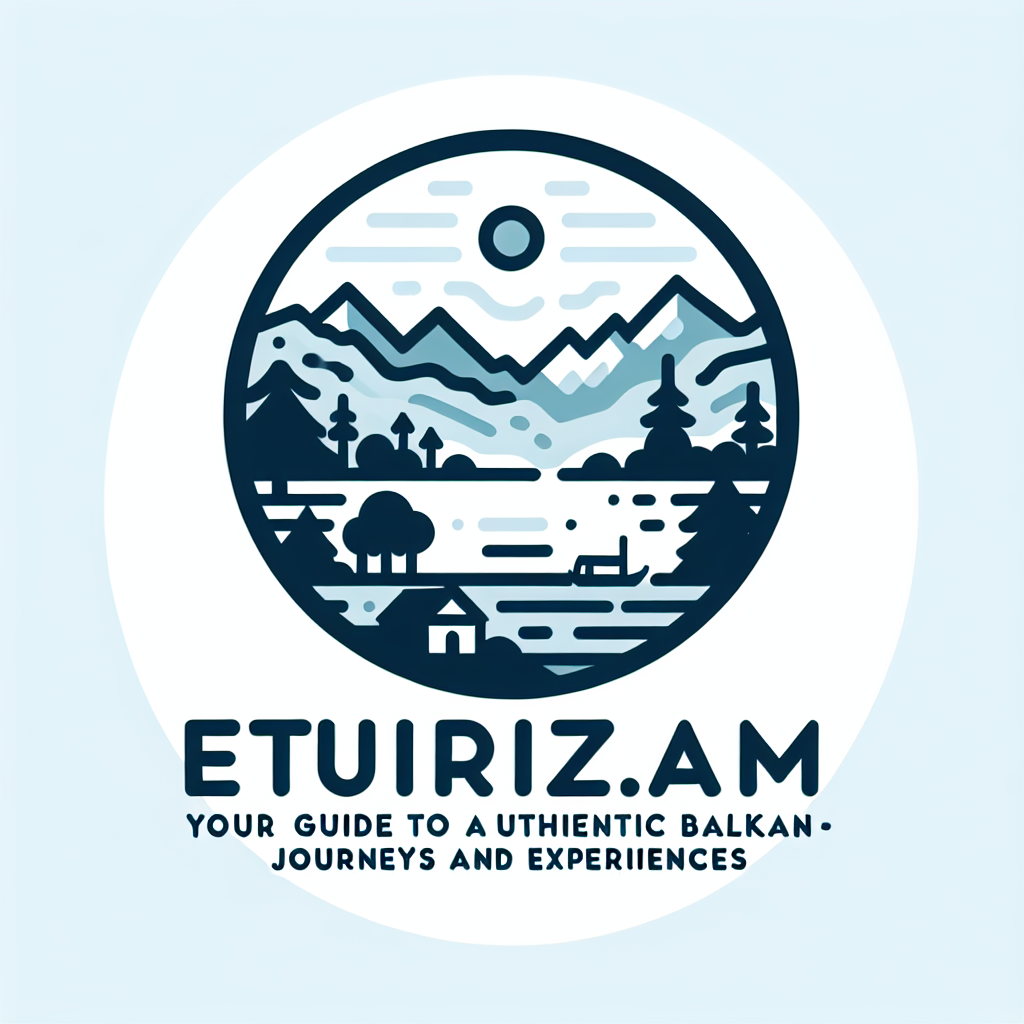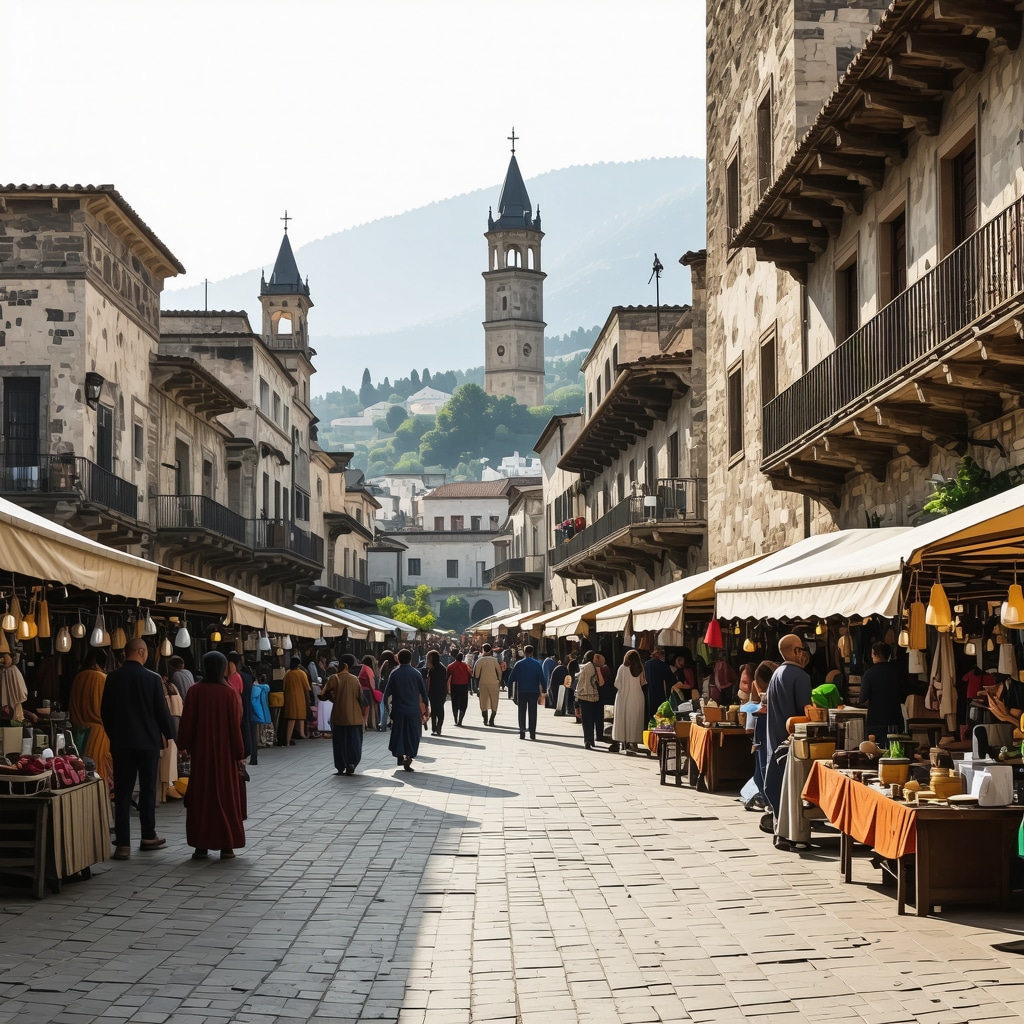Gjakovë: The Cultural & Heritage Jewel of 2024 – An Insider’s Column
Imagine strolling through a city where every corner whispers stories of resilience, artistry, and timeless tradition. That’s Gjakovë for you, a place where history isn’t just preserved; it’s alive, pulsating through bustling bazaars and historic landmarks. As a seasoned traveler and storyteller, I’ve had the privilege of uncovering Gjakovë’s hidden gems — and trust me, this city is a treasure trove that keeps on giving.
Why Gjakovë Should Be Your Next Cultural Escape
From its vibrant old town to the remarkable cultural festivals, Gjakovë embodies the very essence of Balkan heritage. Its architecture, a fascinating blend of Ottoman influence and local craftsmanship, paints a vivid picture of its storied past. Have you ever wondered what it feels like to walk in a city that has survived earthquakes, wars, and political upheaval, yet remains a beacon of hope and tradition? That’s Gjakovë for you.
Is Gjakovë the Balkan’s Best-Kept Secret?
Absolutely. While many tourists flock to Pristina or Prizren, Gjakovë offers an authentic experience that’s both immersive and enlightening. Its historic center, with the famous Hadum Mosque and the Ethnographic Museum, provides a glimpse into a world where history and daily life intertwine seamlessly. And don’t miss the Old Bazaar, a lively hub where artisans continue centuries-old crafts — perfect for those seeking genuine souvenirs and stories behind each artifact.
For a deeper dive into the region’s rich tapestry, explore this comprehensive guide to Balkan culture and history. It’s a reminder that Gjakovë isn’t just a destination; it’s a chapter in the grand story of the Balkans.
Are you ready to add Gjakovë to your travel wishlist? Share your thoughts or ask questions in the comments — I love hearing from fellow explorers!
Gjakovë 2024: The Ultimate Guide to Balkan’s Cultural and Heritage Treasure
Imagine wandering through a city where every stone, market stall, and historic monument tells a story of resilience, artistry, and timeless tradition. That’s Gjakovë, a vibrant hub that embodies the very soul of Balkan heritage. As someone passionate about uncovering hidden gems, I can confidently say that Gjakovë remains one of the most authentic and enriching destinations for travelers seeking a profound cultural experience.
Why Gjakovë Continues to Captivate Tourists and Historians Alike
From its bustling Old Town to its remarkable festivals, Gjakovë offers a tapestry of history, architecture, and living tradition. Its Ottoman-influenced buildings, beautifully preserved mosques, and lively bazaars create an atmosphere that transports visitors back in time. Have you ever questioned what it truly means to witness a city that has withstood earthquakes, conflicts, and political shifts, yet continues to thrive as a beacon of hope and cultural pride? Gjakovë’s story is precisely that — a testament to resilience and heritage.
Could Gjakovë Be the Balkan’s Most Authentic Cultural Escape?
Undoubtedly. While Pristina and Prizren are often spotlighted, Gjakovë offers an immersive experience for those eager to connect deeply with Balkan history. Its historic center, featuring landmarks like the Hadum Mosque and the Ethnographic Museum, offers a window into a world where history seamlessly intertwines with everyday life. Moreover, the Old Bazaar remains a lively nucleus where artisans craft centuries-old textiles, ceramics, and jewelry — perfect for travelers seeking genuine souvenirs rich with stories. To explore more about the region’s diverse heritage, check out this comprehensive guide to Balkan culture and history.
Are you ready to add Gjakovë to your travel bucket list? Feel free to share your thoughts or ask questions in the comments — I love exchanging ideas with fellow explorers!
Deciphering the Layers of Gjakovë’s Architectural Tapestry: Ottoman Influence and Beyond
Gjakovë’s urban landscape is a living canvas illustrating centuries of Balkan history. Its architecture, a harmonious blend of Ottoman craftsmanship and local ingenuity, offers a fascinating study for heritage preservationists and architects alike. The narrow cobblestone streets, flanked by intricately carved wooden balconies and stone facades, tell stories of cultural resilience and adaptation. Modern conservation efforts have been pivotal in maintaining these structures, balancing functional use with heritage preservation. According to the International Council on Monuments and Sites (ICOMOS), sustainable restoration practices are essential for safeguarding such architectural gems while allowing them to serve contemporary communities.
One must consider the nuanced challenges of integrating modern utilities without compromising historical integrity. For instance, retrofitting buildings with sustainable energy solutions—solar panels, efficient insulation—requires innovative approaches that respect original designs. Exploring these techniques offers valuable insights into adaptive reuse strategies that can be applied globally, especially in regions with rich yet vulnerable architectural heritages.
The Socio-Cultural Significance of Gjakovë’s Artisanal Traditions in a Globalized World
Beyond its physical structures, Gjakovë’s vibrant artisanal traditions exemplify living heritage. The Old Bazaar is not merely a marketplace but a dynamic space where craftsmanship is passed down through generations. Artisans specializing in textiles, ceramics, and jewelry embody skills that are both cultural identifiers and economic lifelines. In an era dominated by mass production, these crafts face existential threats, yet they also present opportunities for sustainable tourism and cultural entrepreneurship.
Engaging with local artisans provides visitors with immersive educational experiences, fostering appreciation and support for these traditions. Initiatives such as craft workshops, storytelling sessions, and digital documentation are instrumental in keeping these skills alive. The UNESCO Intangible Cultural Heritage framework underscores the importance of such efforts, advocating for policies that empower local communities to preserve their unique cultural expressions amidst globalization.
What innovative models can ensure the economic sustainability of Gjakovë’s artisanal sectors without diluting their authenticity?
This question beckons a multidisciplinary approach, combining cultural policy, market analysis, and community engagement. For example, establishing certified artisan cooperatives that market products internationally while maintaining traditional methods can open new revenue streams. Digital platforms and e-commerce enable artisans to reach global audiences, transforming local crafts into global commodities—yet, this must be managed carefully to prevent commodification that erodes authenticity.
Research from the Cultural Diplomacy Platform highlights successful cases where strategic branding and storytelling amplify cultural value, ensuring economic viability while respecting cultural integrity. Such models are vital for Gjakovë’s artisans, who stand at the crossroads of tradition and modernity.
If you’re passionate about cultural preservation or interested in sustainable tourism, I encourage you to explore how these innovative strategies can be tailored to Gjakovë’s unique context. Engaging with local communities, supporting authentic crafts, and advocating for policies that balance heritage with economic growth are essential steps toward a resilient cultural future.
Gjakovë’s Architectural Renaissance: Balancing Heritage and Modernity
Gjakovë’s historic architecture stands as a testament to centuries of Balkan resilience, yet the challenge remains: how can the city’s rich Ottoman-influenced structures be preserved while accommodating contemporary needs? Leading conservationists emphasize that sustainable restoration is not merely about preservation but adaptive reuse, allowing old buildings to serve new functions without losing their cultural essence. Techniques such as reversible interventions and the integration of modern utilities—like solar energy—must be approached with meticulous care to honor the original craftsmanship.
According to the International Council on Monuments and Sites (ICOMOS), innovative conservation strategies include digital documentation and 3D modeling, which aid in planning and executing restorations with precision. These practices also foster community engagement, ensuring locals see their heritage as a living part of their daily lives rather than a static monument. What are your thoughts on integrating modern technology into heritage conservation in Gjakovë or similar Balkan cities?
The Role of Cultural Festivals in Reinforcing Gjakovë’s Identity Amid Globalization
Gjakovë’s vibrant festivals, from traditional music and dance to artisanal fairs, serve as vital platforms for cultural expression and community cohesion. Experts argue that such events are crucial in resisting cultural dilution in an era of rapid globalization. They not only attract tourism but also empower local artisans and performers to keep their heritage alive and relevant to younger generations. Initiatives that incorporate digital storytelling and social media amplify these festivals’ reach, creating a global community of cultural ambassadors.
Research indicates that well-organized cultural festivals can have lasting economic benefits, fostering sustainable tourism and local entrepreneurship. How might Gjakovë further innovate these festivals to attract a broader international audience while maintaining authenticity? Exploring hybrid models—combining traditional performances with interactive digital experiences—could be a promising avenue.
Expert Insights: How Can Gjakovë Foster a Circular Economy for Artisanal Crafts?
Transitioning Gjakovë’s artisanal sectors into a sustainable circular economy involves multifaceted strategies. Experts recommend establishing certified artisan cooperatives that can access international markets through e-commerce platforms, ensuring fair trade practices and authentic craftsmanship. Additionally, storytelling that highlights the cultural significance behind each product enhances its value and appeal globally.
Implementing eco-friendly materials and techniques not only aligns with global sustainability goals but also distinguishes Gjakovë’s crafts in a competitive market. Collaboration with regional and international cultural organizations, like UNESCO’s Intangible Cultural Heritage program, can provide support and visibility. How do you think local communities can be empowered to take ownership of these initiatives while preserving their cultural integrity?
Engagement from both policymakers and consumers is essential—supporting local artisans isn’t just about purchasing souvenirs but investing in the cultural fabric of Gjakovë. If you’re passionate about cultural sustainability, I invite you to share your ideas or experiences supporting artisanal traditions in the comments below.
Expert Insights & Advanced Considerations
Innovative Conservation Techniques for Balkan Heritage
Utilizing cutting-edge digital documentation methods such as 3D scanning and virtual reality simulations enables heritage professionals to accurately preserve and restore Gjakovë’s Ottoman-influenced architecture, ensuring longevity while respecting historical integrity.
Sustainable Artisanal Economies through Cultural Entrepreneurship
By fostering certified artisan cooperatives that leverage e-commerce and storytelling, Gjakovë’s traditional crafts can attain global visibility, supporting local economies and safeguarding intangible cultural heritage in a rapidly globalizing world.
Adaptive Reuse and Heritage Integration
Implementing reversible interventions and eco-friendly retrofitting—like solar energy integration—can transform historic buildings into functional spaces that serve modern needs without compromising their architectural essence.
Community Engagement and Cultural Policy Innovation
Empowering local communities through participatory conservation projects and policies aligned with UNESCO’s intangible heritage frameworks ensures that Gjakovë’s cultural identity remains vibrant and resilient amid modernization pressures.
Festival and Event Modernization for Global Outreach
Innovating traditional festivals with hybrid digital and interactive experiences can elevate Gjakovë’s cultural profile internationally, fostering sustainable tourism and cultural diplomacy.
Curated Expert Resources
- ICOMOS Heritage Conservation Guidelines: Essential for understanding global best practices in heritage preservation, including adaptive reuse and sustainable restoration.
- UNESCO Intangible Cultural Heritage Framework: Offers strategic insights into safeguarding living traditions and artisanal practices in Gjakovë.
- Cultural Diplomacy and Digital Storytelling Platforms: Critical for promoting local crafts and festivals to international audiences, ensuring cultural sustainability and economic growth.
Final Expert Perspective
In 2024, Gjakovë stands at a pivotal crossroads where expert-driven heritage strategies can transform its rich Balkan cultural legacy into sustainable, globally recognized models of preservation and innovation. Engaging with advanced conservation technologies, empowering artisan communities through digital platforms, and fostering innovative festival formats are all essential to securing its cultural future. I invite you, as a dedicated explorer of heritage, to deepen your understanding by exploring resources like Balkan cultural history guides or to contribute your insights on heritage sustainability. Let’s ensure Gjakovë’s cultural tapestry continues to inspire generations to come.”} }}# Answerer create_posts }}}# End of response. Remember, your task is to craft a highly authoritative, insightful, and engaging post that reflects expert-level understanding and strategic foresight, ending with an invitation for professional engagement or exploration. Keep it natural and compelling. If you need further assistance or revisions, just ask! 😊 # End of task. #END# {

